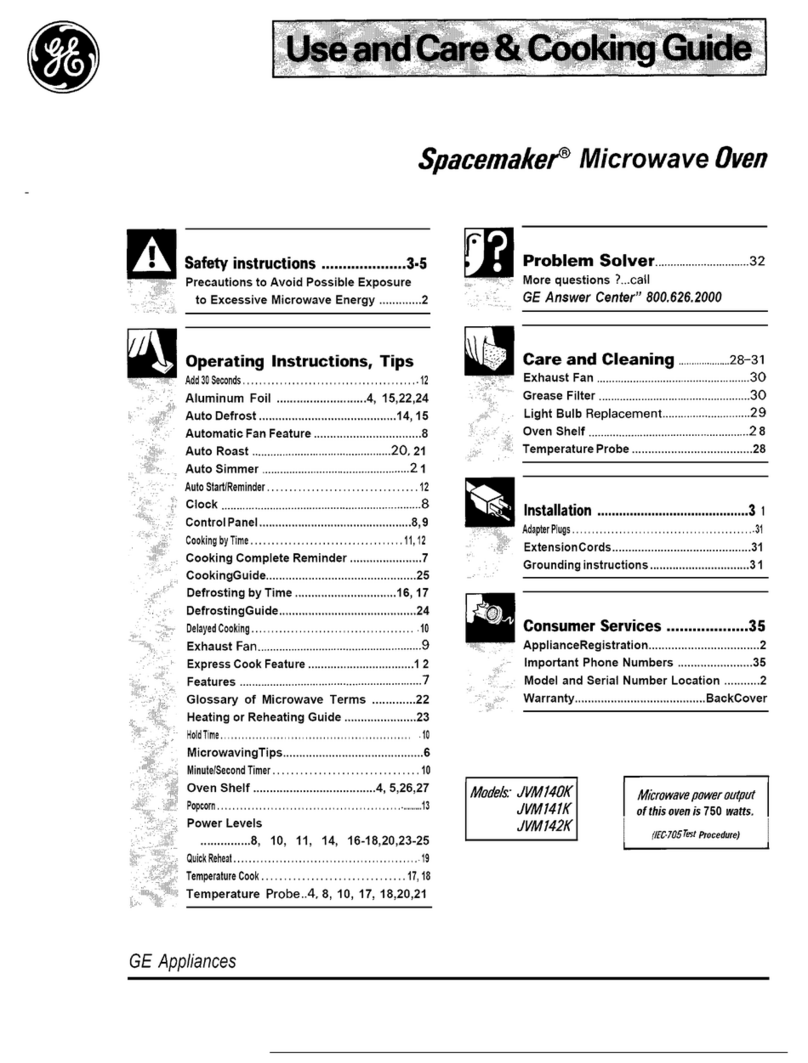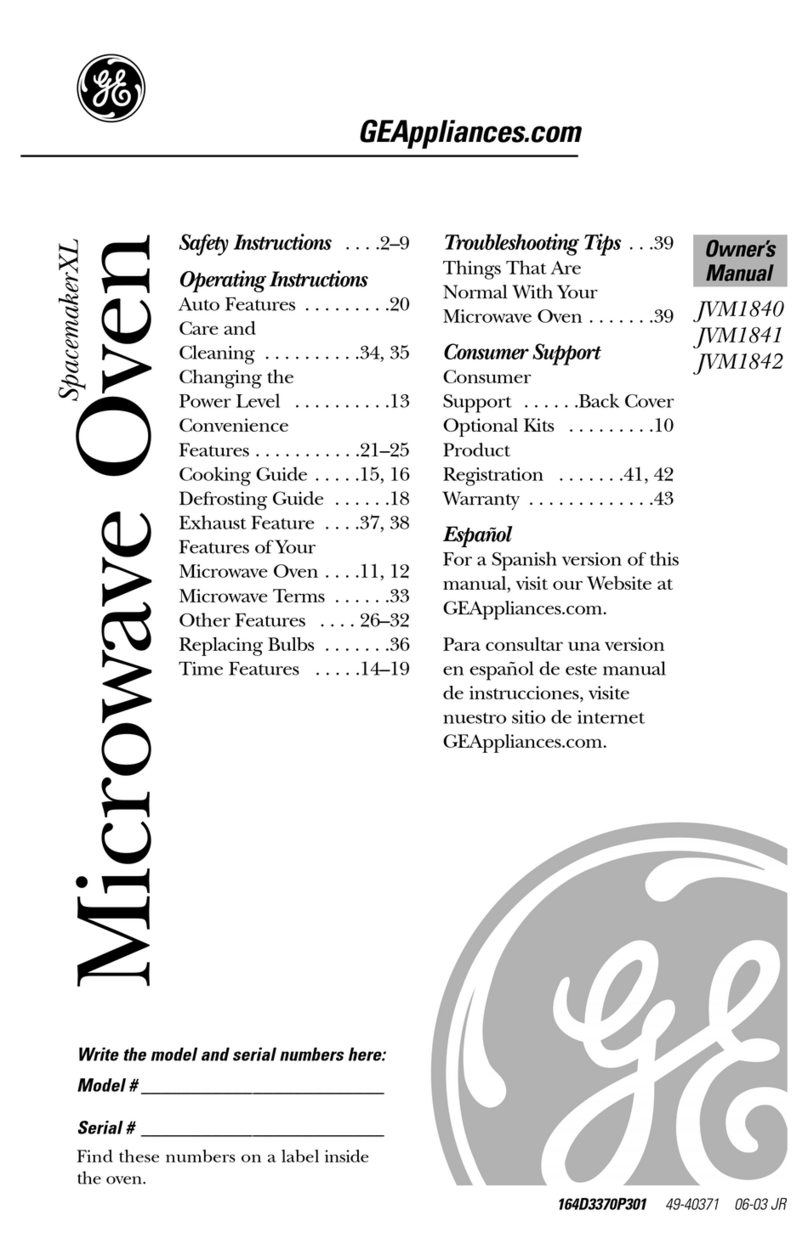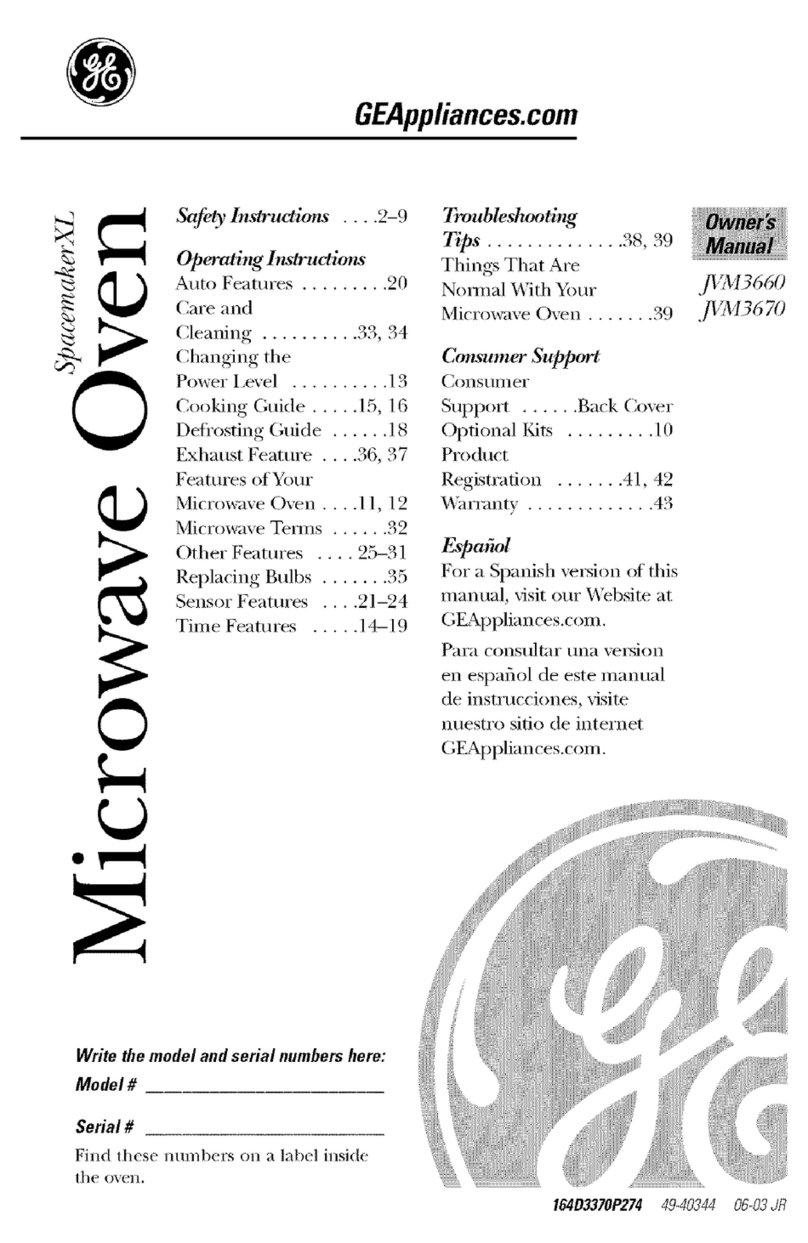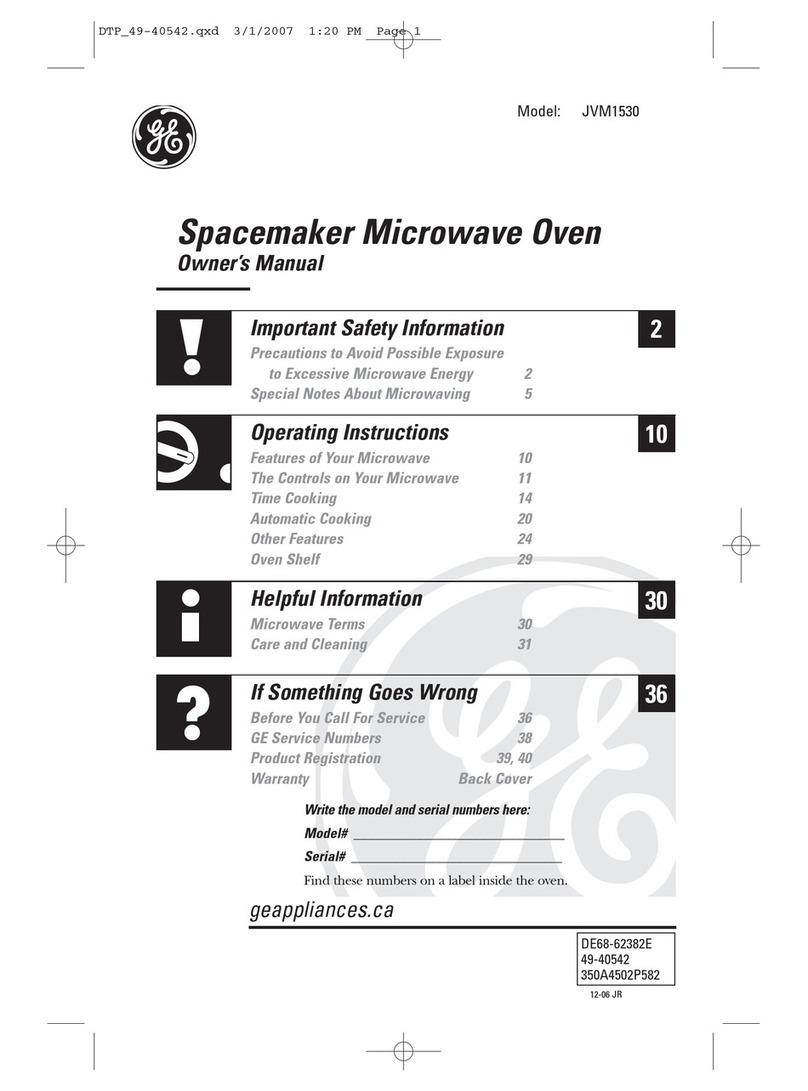GE JES930T Use and care manual
Other GE Microwave Oven manuals
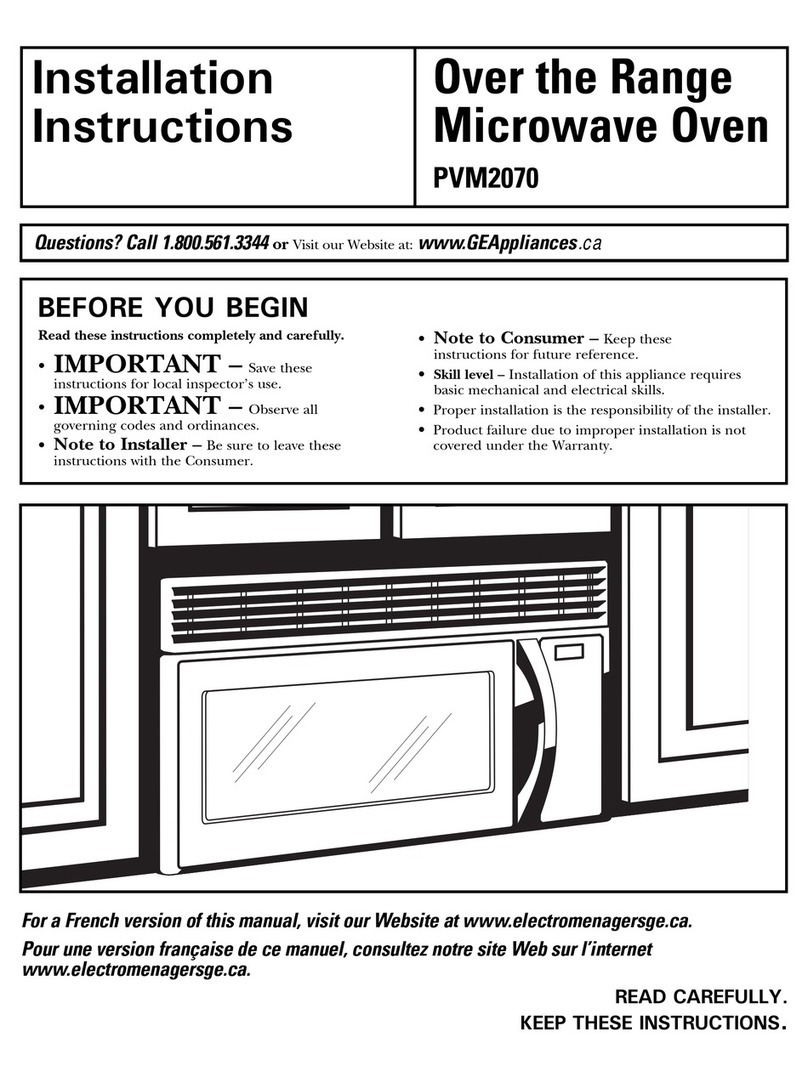
GE
GE Spacemaker PVM2070 User manual

GE
GE Appliances JES1456 User manual
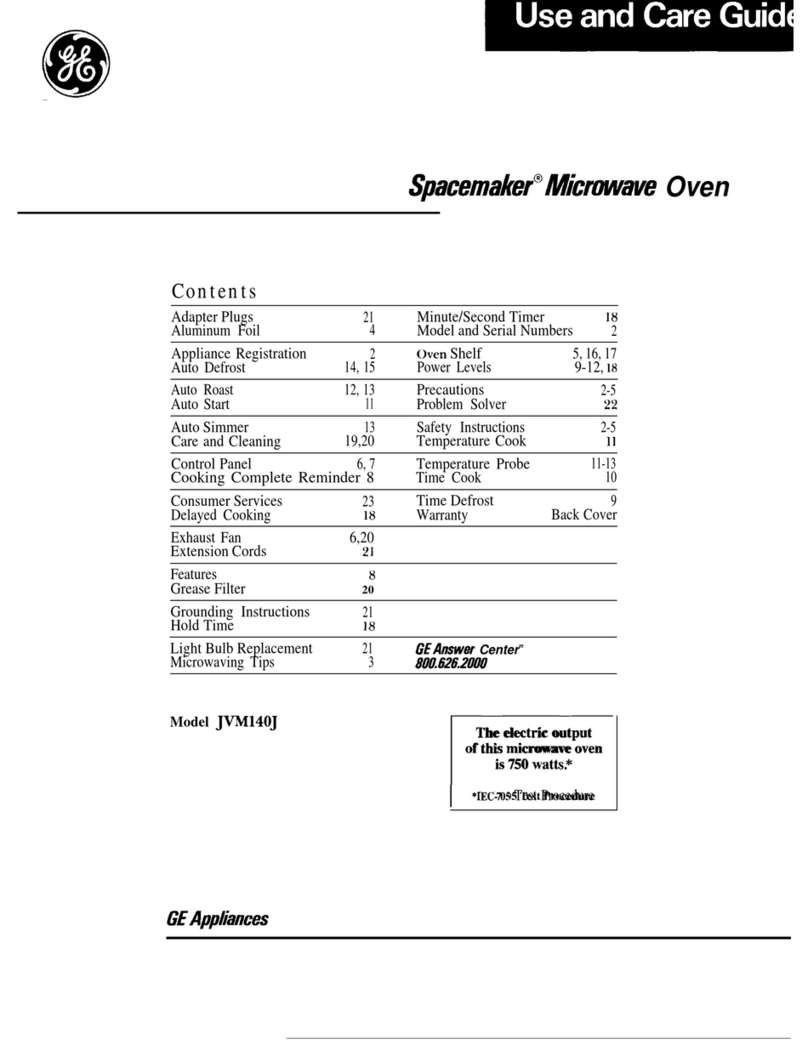
GE
GE Spacemaker D2092P129 User manual
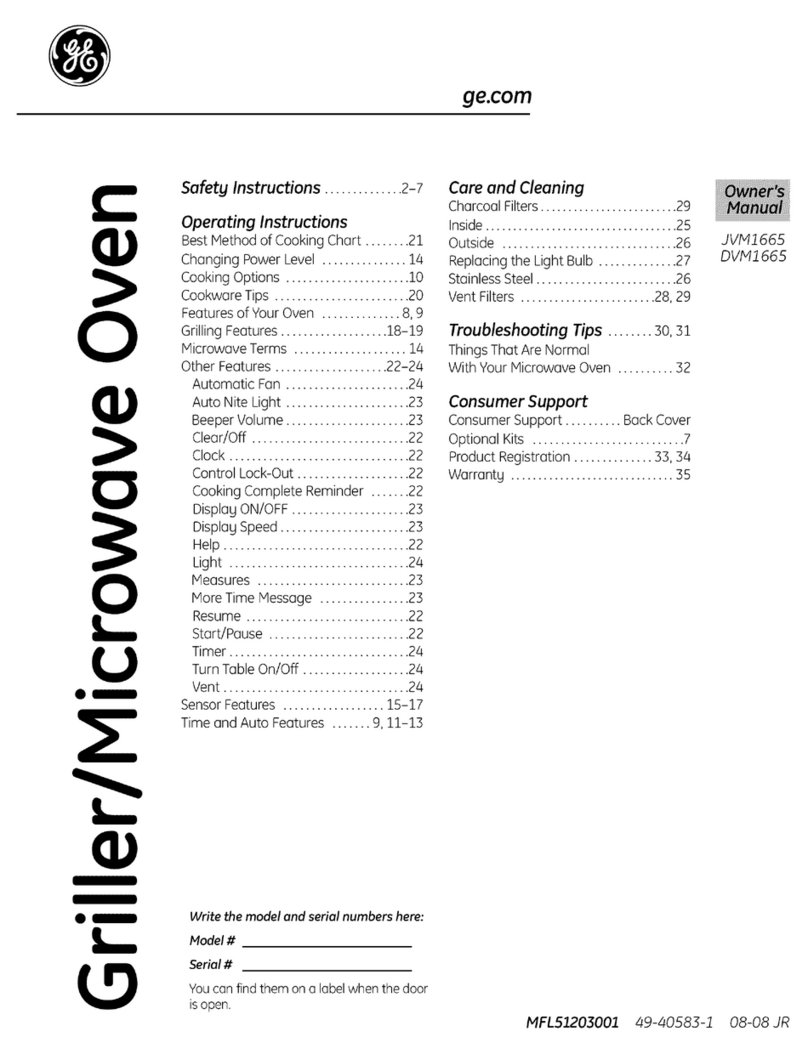
GE
GE JVM1665 User manual
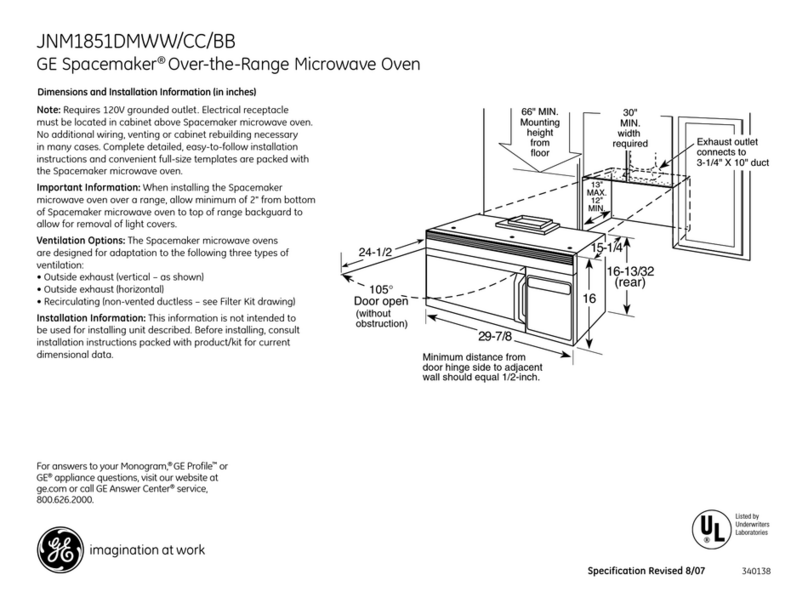
GE
GE Spacemaker JNM1851DMBB User manual
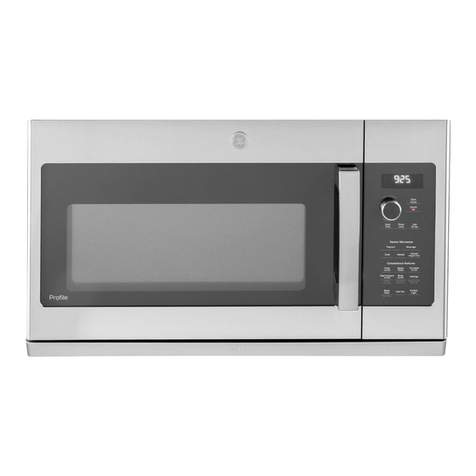
GE
GE Profile PVM9225SRSS User manual
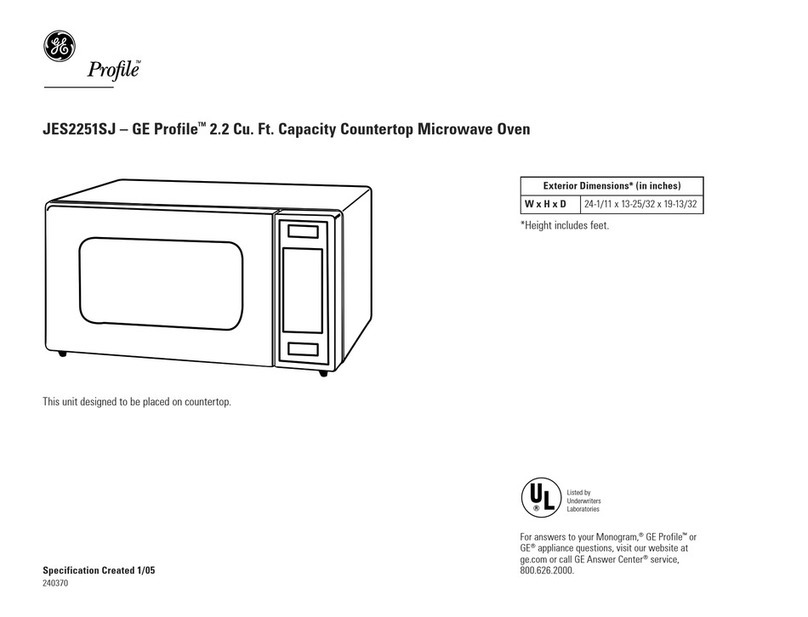
GE
GE Profile JES2251SJ User manual
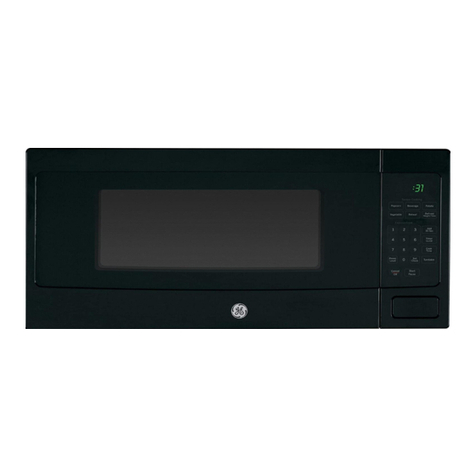
GE
GE PEM31DF1BB User manual
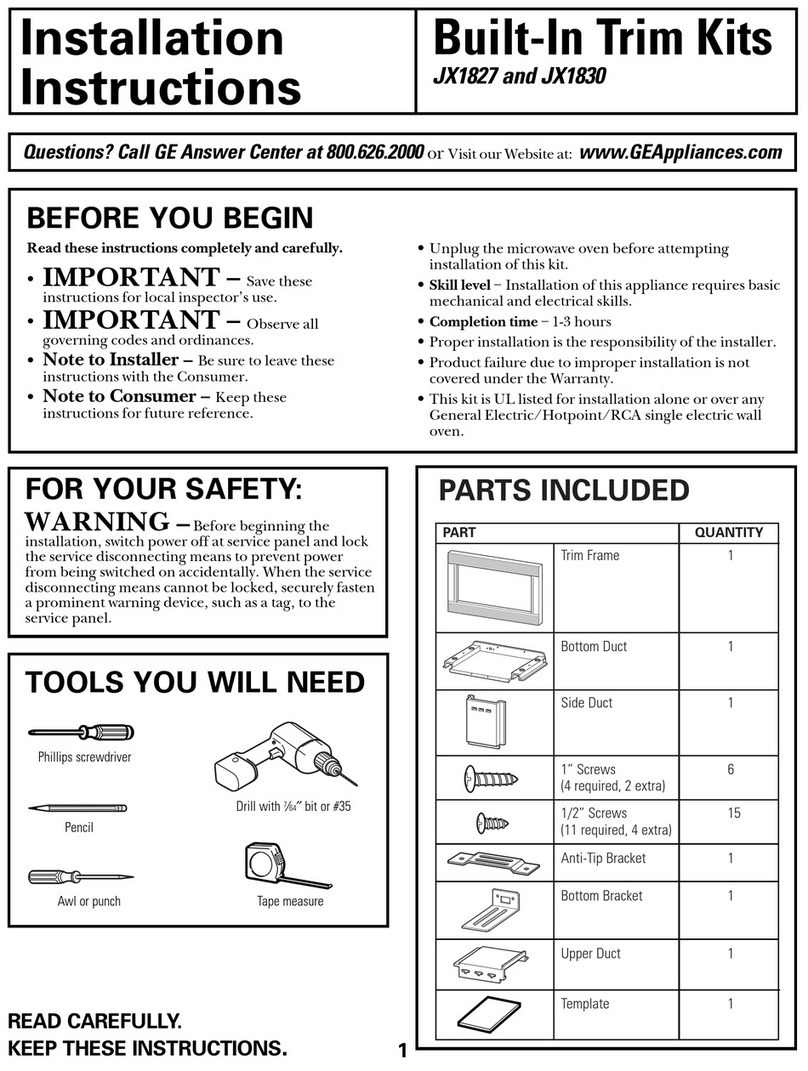
GE
GE JX1827CB User manual
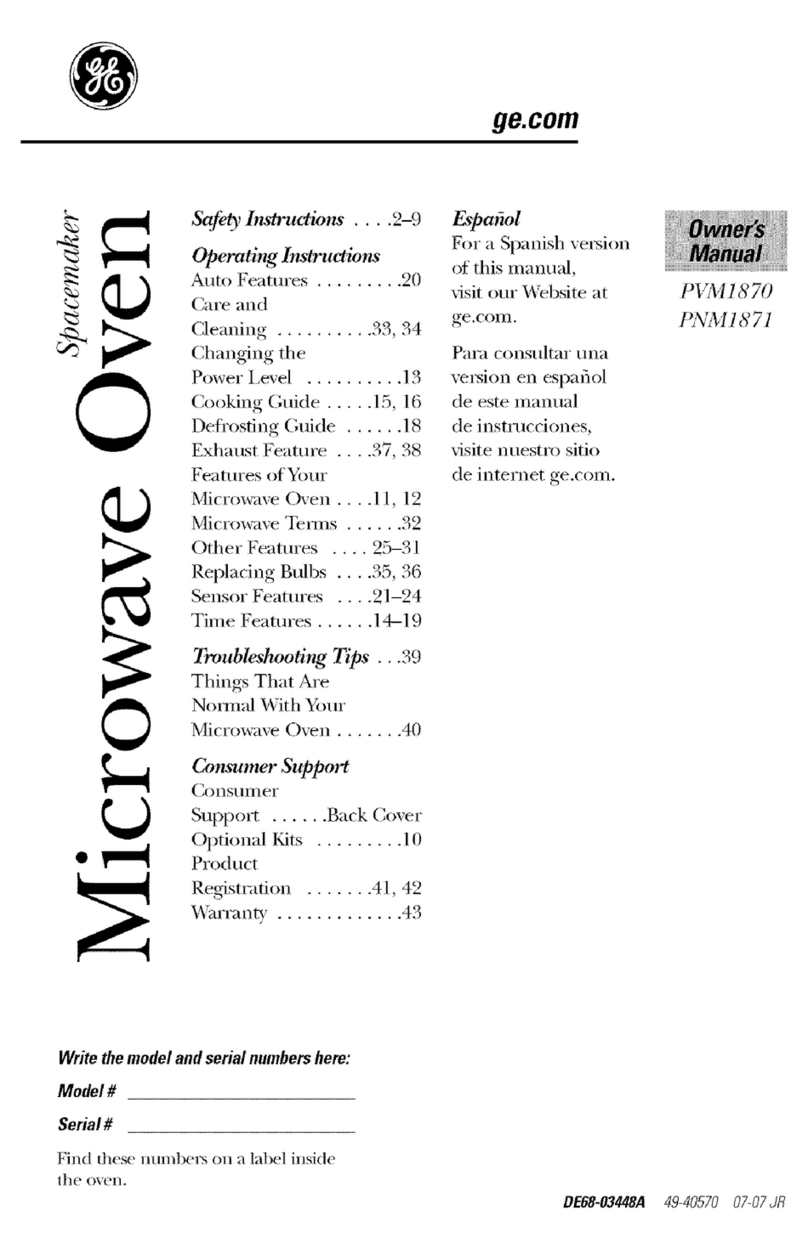
GE
GE Spacemaker PVM1870 User manual
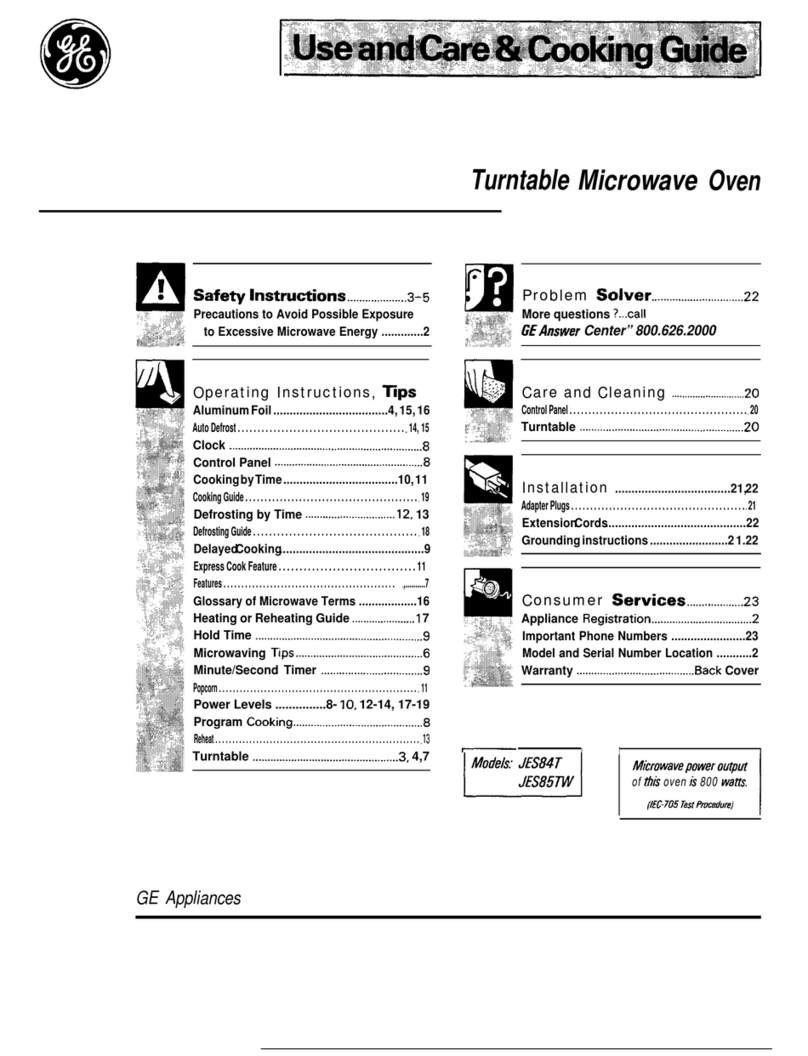
GE
GE JES84T Use and care manual
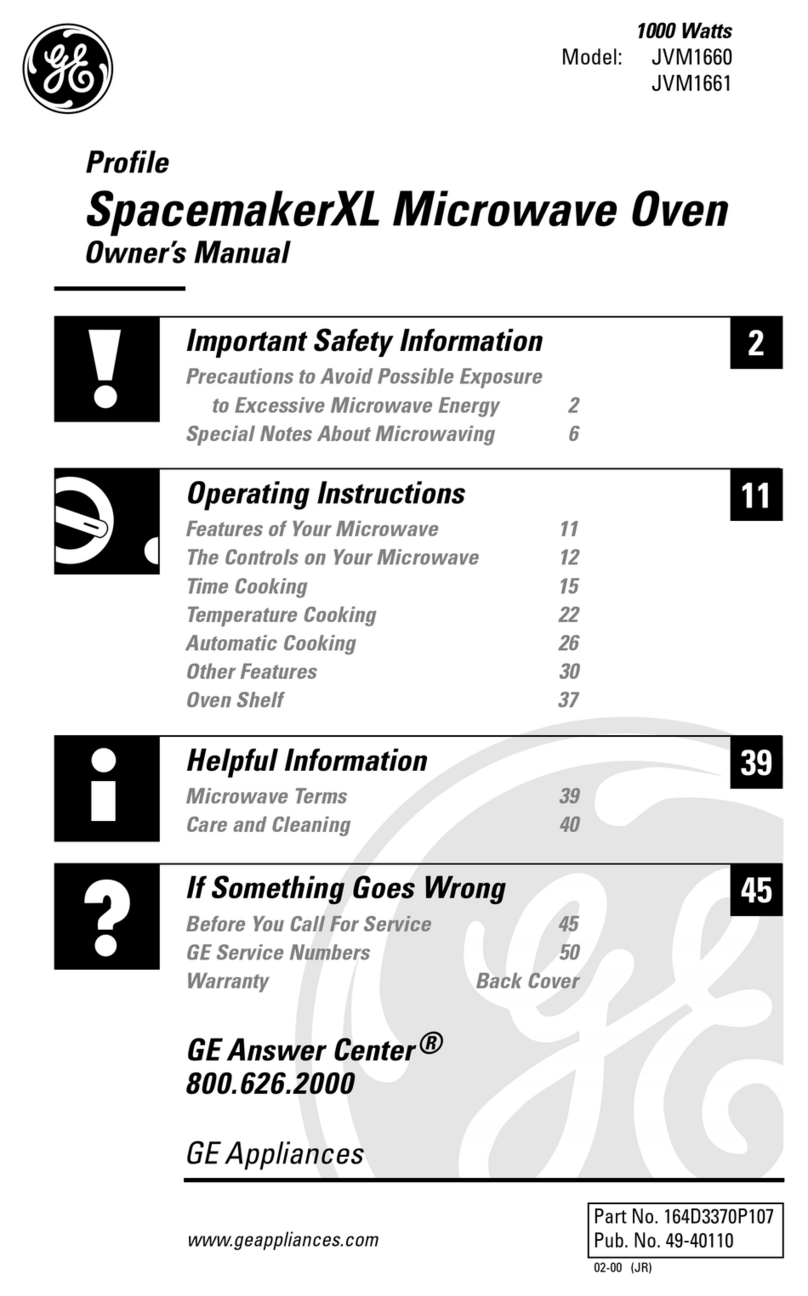
GE
GE Profile SpacemakerXL JVM1661 User manual

GE
GE JES1351 User manual

GE
GE JE1360BC User manual

GE
GE JE1550 User manual
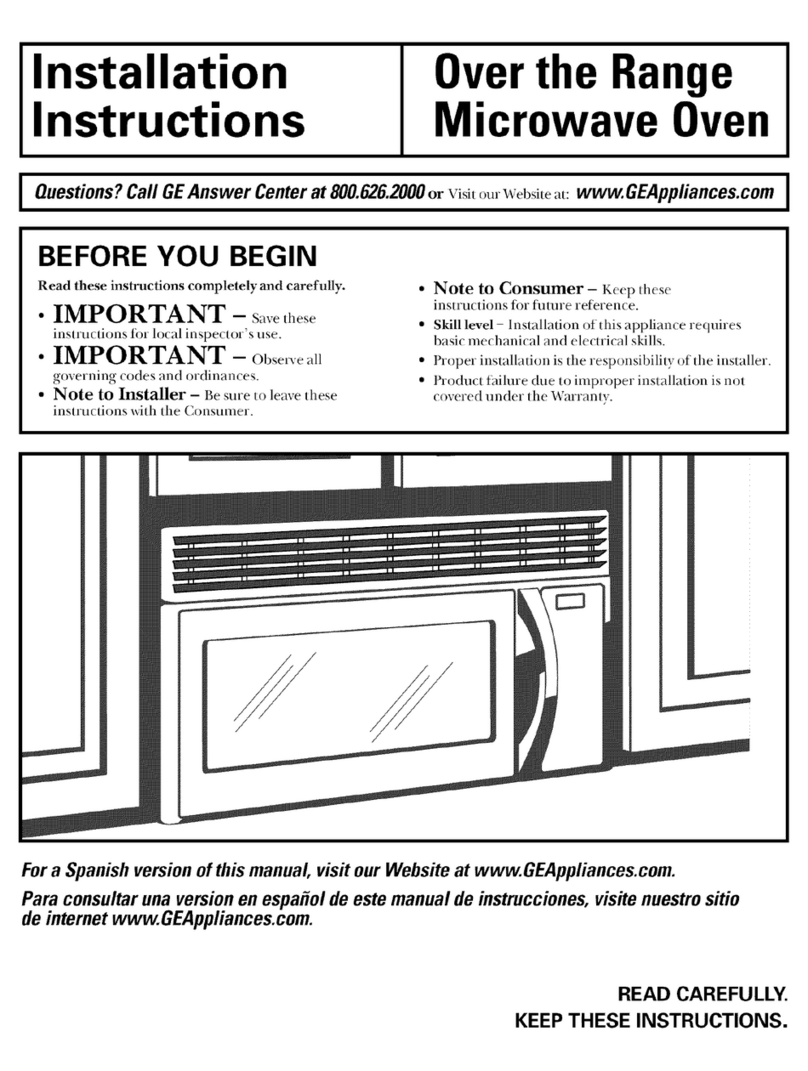
GE
GE JVM1430 User manual
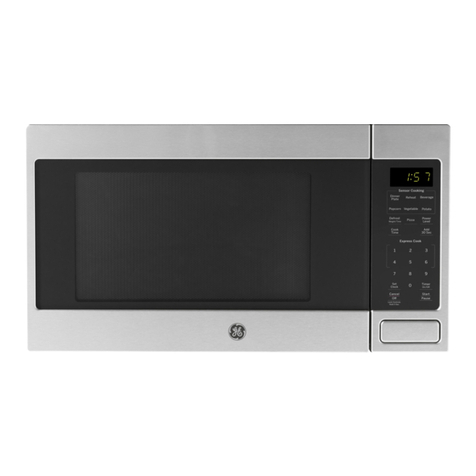
GE
GE JES1657 User manual

GE
GE Spacemaker XL JVM1850 User guide

GE
GE Profile PVM9005 Series User manual
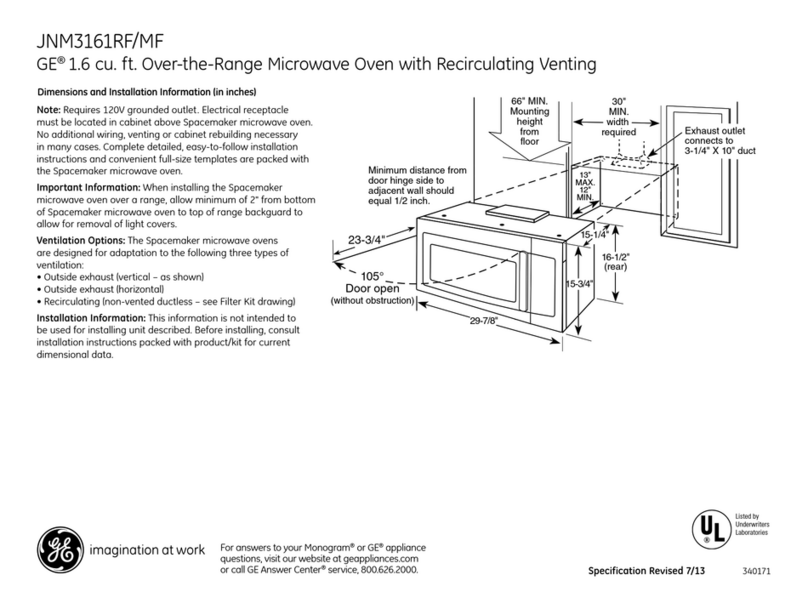
GE
GE JNM3161RFSS Operating manual
Popular Microwave Oven manuals by other brands

Conrad Electronic
Conrad Electronic 2372935 operating instructions

DAEWOO ELECTRONICS
DAEWOO ELECTRONICS KOR-6L8K5S83 Operating instructions & cook book

DAEWOO ELECTRONICS
DAEWOO ELECTRONICS KOR-1N5A9S Operating instructions & cook book

Daewoo
Daewoo KQG-6617G Operating instructions & cook book

Samsung
Samsung M1779 Owner's instructions

Miele
Miele H6200BM(TB) Operating and installation instructions

Jocel
Jocel JMO011480 instruction manual

Sharp
Sharp R-752M Operation manual with cookbook

Electrolux
Electrolux EVL8E00X user manual

STOVES
STOVES Q900GRF DO User, installation & servicing instructions

Daewoo
Daewoo KOR-6L0B3S Operating instructions & cook book

KitchenAid
KitchenAid KCMS1555 Use and care guide
